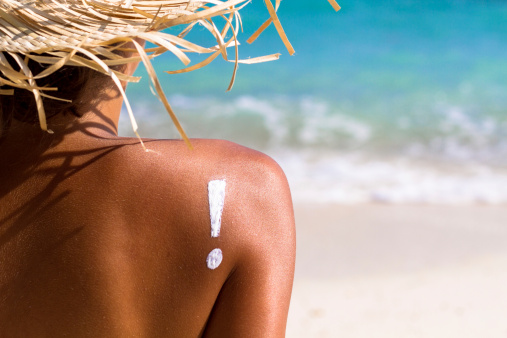Preventing Bacterial Skin Infections

You’ve probably heard a horror story or two about bacterial skin infections, either in the news or from a person you know. The truth is that bacterial skin infections can happen to anyone at any time. They often occur in summer, because summer activities can often leave us open to these infections. Here’s a guide to bacterial skin infections, along with some tips for preventing them.
- You may not realize it, but there are many different types of skin infections. Bacterial skin infections include:
- Cellulitis: This infection affects the dermis and the subcutaneous tissue, which are the deepest layers of the skin. It looks like a swollen, red area, and feels tender and hot to the touch. Typically caused by Staphylococcus and Streptococcus, it usually occurs when the skin is broken, and can be deadly if it spreads to the bloodstream.
- Erysipelas: With symptoms that include an intense burning sensation, extreme redness, and swelling, this infection is commonly called “St. Anthony’s Fire.” It’s caused by Streptococcus bacteria and can occur in conjunction with athlete’s foot, eczema, or a nose or throat infection.
- Bacterial Folliculitis: This common infection affects the hair follicles. Symptoms include tiny red or white-headed bumps, and it occurs more often in people with acne than in those who have clearer skin. It often heals on its own but sometimes requires antibiotics, and if it’s left untreated, it can cause permanent hair loss.
- Hot tub Folliculitis: Like bacterial folliculitis, this causes pus-filled bumps, but it also comes with a red, itchy rash. It’s contracted through contaminated hot tubs and whirlpools, as well as water slides and physiotherapy pools. Sometimes you can even get this infection from loofah sponges. Hot tub folliculitis is more common in children than adults. If you’re unsure whether the acid and chlorine levels of a hot tub or whirlpool are controlled, don’t get in. After you’ve been in a communal body of water, always shower.
- Impetigo: A bacterial infection of the top layer of epidermal skin, impetigo is highly contagious. More commonly seen in children than adults, it’s a rash covered by a honey-colored crust, usually around the nose and mouth. It’s caused by Staphylococcus and Streptococcus, is highly contagious, and is commonly treated with topical antibiotics.
- Furuncles: Commonly known as boils, these can turn into abscesses if left untreated. A furuncle is a painful infection around a hair follicle, but unlike folliculitis, furuncles infect not only the follicle but also the hair shaft, sebaceous gland, and the muscle fibers attached to the hair follicle.
- Carbuncles: This is a cluster of several furuncles all together and can be as large as four inches across. Carbuncles are usually caused by Staphylococcus and tend to form on the back, thighs, and back of neck. They can cause fever, weakness, and exhaustion. Carbuncles are contagious and can cause scarring, so they require immediate medical attention.
- MRSA: An acronym for Methicillin-resistant Staphylococcus aureus, MRSA is very serious and resists standard antibiotic treatment. In severe cases, it can spread through the bloodstream into organs like the lungs or urinary tract. It’s important to treat MRSA promptly, as it’s very contagious.
- You can protect yourself against bacterial infections, preventing them by using certain best practices. Always use good hygiene, washing your hands frequently and using a hand sanitizer when you can’t. Avoid touching frequently used surface areas like restaurant menus and restroom door handles, and sanitize surfaces whenever you can. Keep your skin well hydrated, using moisturizers without a lot of ingredients like fragrances and preservatives.
- How are bacterial infections treated? In some cases, you can treat a bacterial infection at home. Warm compresses can relieve boils, over-the-counter antibiotic creams can sometimes work on a rash, and home remedies abound, using things like ginger, yogurt, apple cider vinegar, and baking soda. Some of these are effective, but if your skin infection involves high fever, extreme pain, or swelling that spreads, it’s important to seek medical attention promptly. You may need oral or even intravenous antibiotics.
Whether you’re concerned about a bacterial infection or just need help caring for your skin, contact Swinyer-Woseth Dermatology to schedule a consultation. We’re committed to providing superior, professional skin care in a manner that’s practical, efficient, and compassionate. With over 30 years of experience supplying dermatological services in Salt Lake City, we offer a variety of services, from cosmetic skincare to treatment for skin cancer. Our team of board- certified dermatologists and licensed cosmetic service providers are here to provide you the care you need in a comfortable, professional atmosphere. Call (801) 682-4715 or contact us through our website.
